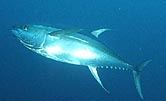- How Daily Prunes Can Influence Cholesterol and Inflammation
- When to Take B12 for Better Absorption and Energy
- Epsom Salts: Health Benefits and Uses
- See What Saffron Can Do for Sleep and Heart Health
- 6 Common Mistakes to Avoid Before Your Physical
- Can Sweating Really Help You Beat a Cold?
- Strengthening Your Relationship: Practical Strategies
- Skip Storing This Everyday Product in the Fridge Door
- Green Tea + B3 Pairing May Boost Brain Health
- Navigating Your Midlife Crisis: Embracing New Possibilities
Scientists Pinpoint Source of Mercury in Pacific Ocean Fish


MONDAY, Aug. 26Levels of mercury in Pacific Ocean fish are likely to rise over coming decades, say researchers who report they’ve discovered how mercury gets into open-ocean fish.
They concluded that up to 80 percent of the toxic form of mercury (methylmercury) found in deep-feeding North Pacific fish is produced in the ocean’s depths, probably by bacteria that cling to sinking bits of organic matter.
Researchers say they also confirmed that mercury found in fish near Hawaii likely traveled through the air for thousands of miles before being deposited in the ocean by rainfall. They noted that the North Pacific fisheries are downwind from rapidly industrializing nations such as China and India. These nations increasingly rely on coal-burning power plants, which are a major source of mercury pollution.
The study was published online Aug. 25 in the journal Nature Geoscience.
“This study reinforces the links between mercury emitted from Asian countries and the fish that we catch off Hawaii and consume in this country,” study lead author Joel Blum, an environmental scientist at the University of Michigan, said in a university news release.
“The implications are that if we’re going to effectively reduce the mercury concentrations in open-ocean fish, we’re going to have to reduce global emissions of mercury, including emissions from places like China and India,” Blum said. “Cleaning up our own shorelines is not going to be enough. This is a global atmospheric problem.”
The main way that methylmercury gets into people is through eating large predatory fish such as swordfish and tuna. The health effects of methylmercury include damage to the central nervous system, the heart and the immune system, according to the release. The developing brains of fetuses and young children are particularly vulnerable.
The nine species of fish included in the study were: flying fish, mahi-mahi, yellowfin tuna, skipjack tuna, moonfish (opah), bigeye tuna, swordfish, and two species of lantern fish.
More information
The U.S. Environmental Protection Agency has more about mercury in fish and shellfish.
Source: HealthDay
Copyright © 2026 HealthDay. All rights reserved.










